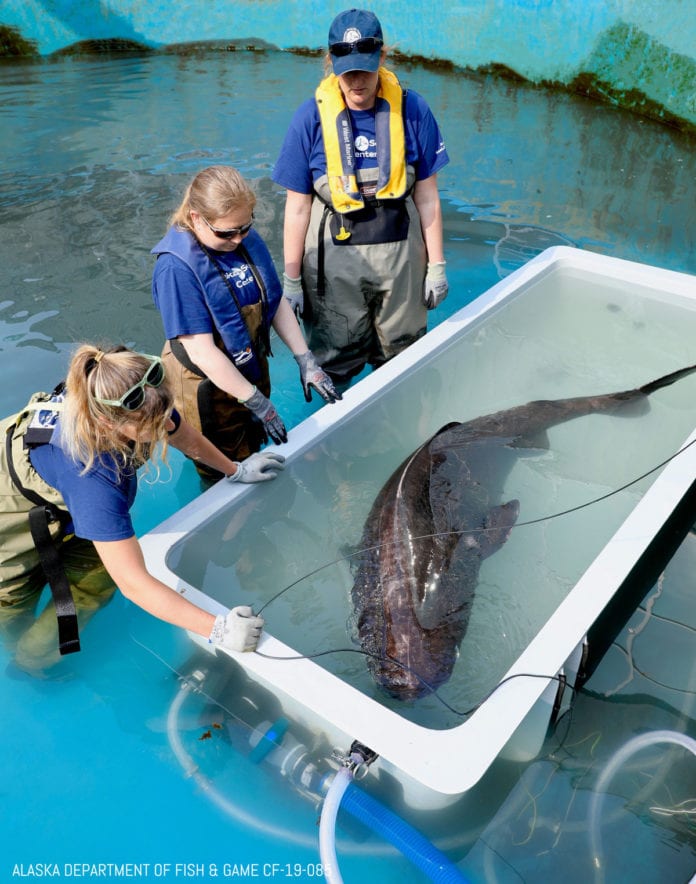
Researchers at the Alaska SeaLife Center in Seward are collaborating with a shark expert at California State University in studying a small male Pacific sleeper shark captured recently to learn more about this species.
The Pacific sleeper shark is a close relative of the Greenland shark, which has been found to possibly live for several hundred years.
“If findings from recent studies on the Greenland shark transfer to Pacific sleepers, these animals could maybe reach an astonishing age of 200-300 years old,” said Amy Bishop, a research scientist at ASLC. Markus Horning, senior research scientist at ASLC, is leading the study with Christopher Lowe of Cal State, to learn more about the ecological importance of these sharks, how their populations are impacted through fishing activities, as well as their predation habits. The Pacific sleeper shark is a large marine predator in Alaskan waters and evidence from initial tagging work by the center’s researchers suggests they may be a key predator of juvenile Steller sea lions.
Reseachers began fishing for sharks in 2018 with the goal of finding specimens under six feet. The goal is to bring up to five young, small sharks to the center for short periods of time for select studies on their metabolic rates and basic biology, then release them back in Resurrection Bay with telemetry tags to monitor their movements.
Funding for this study comes from the North Pacific Research Board in Anchorage.




